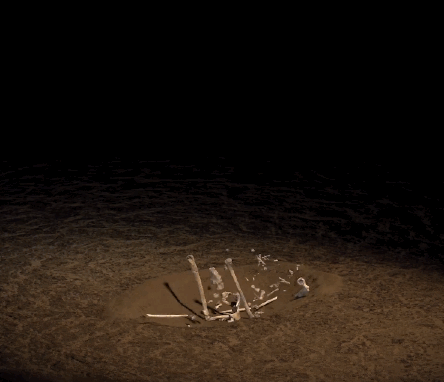This week, the science community is reeling from the biggest evolutionary find in decades—the announcement of more than 1,500 bone fragments from at least 15 different human individuals found deep within Rising Star cave in South Africa.
The landmark discovery of what appears to be a prehistoric burial ground frequented by a previously unknown species, homo naledi, came about from the passion of one man and some very skinny cavers.
Professor Lee Berger’s insistence that South Africa had more to teach us about early human evolution had all but been rejected by his peers, who’d moved on to searching for the oldest species of humans in parts of Asia instead.
But Berger’s zeal for his work led him to enlist the help of local cavers to look for fossil fragments whenever they went on their expeditions. Two of these cavers, Steven Tucker and Rick Hunter, went on a dip through Rising Star last year and wound up winnowing their way through impossibly small spaces, including a tiny, low tunnel called Superman’s Crawl and a claustrophobic chute less than eight inches wide.
Tucker and Hunter evidently traversed parts of the cave that no human had visited in centuries—because what they found after maneuvering through these spaces was a small chamber full of hundreds upon hundreds of perfectly preserved bones. The bones represented all types and ages of human, none over five feet tall.
Because the circumstances surrounding the discovery are so extraordinary, Berger made the decision to announce the identity of the new species despite not yet knowing exactly how old the bones are—or how they got into the cave. He and his team of researchers named the species naledi after the South African word for “star,” in honor of the cave that gave them a centuries-old gift.
Given that there’s no sign of sediment from water transport or tooth marks from animals dragging the bones there, the most likely solution is that the bones were dropped into the cave by other humans as a kind of burial ground. If that’s the case, then it indicates that this early species of human may have been quite sociologically advanced—perhaps as advanced in caring for its dead as we are.
“No matter what the age, it will have tremendous impact,” Berger told National Geographic.
Essentially, homo naledi has shown that the record of human evolution is much fuzzier than we thought. If it’s one of the older species, then our understanding of the timeline of human development may need significant revision. If it’s one of the newer species, then it’s possible the development of homo sapiens—you and me—wasn’t as straightforward an evolutionary project as we might believe.
And the question of how the bones got there is an entirely different issue.
What’s most remarkable about the bones, however, is that they lay undiscovered for hundreds of thousands—possibly even millions—of years while spelunkers and tourists came and went nearby.
Though thousands of fragments have been recovered, researchers have only canvassed a small section of the chamber the bones were found in.
It may be years before Rising Star has finished giving up its secrets.
Screengrab via WittsUniversity/YouTube



